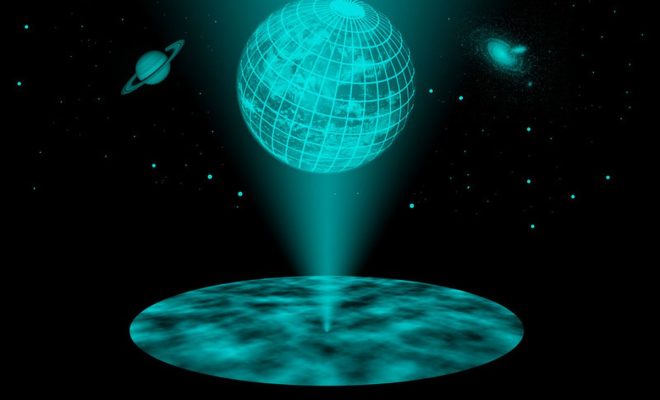If The Universe Is A Hologram, We May Soon Gaze Into A Black Hole

Introduction:
The universe has been a source of wonder and deep fascination for centuries. Scientists have proposed numerous theories to explain its existence, one of which is the holographic principle. This intriguing idea suggests that the universe behaves like a two-dimensional hologram containing detailed information about the three-dimensional reality we perceive. If this is true, our understanding of black holes could be revolutionized, and we might soon get a chance to see inside these enigmatic cosmic phenomena.
The Universe as a Hologram:
The holographic principle is a theoretical framework derived from the realm of quantum mechanics and string theory. It states that all the information contained in our three-dimensional universe is encoded on a two-dimensional surface called a holographic boundary or horizon. According to this theory, the third dimension, or depth, is an illusion created by interference patterns on this holographic surface. This idea was first proposed in the 1990s by physicist Gerard ‘t Hooft and further developed by Leonard Susskind.
Black Holes and The Holographic Principle:
The holographic principle may hold the key to understanding black holes – mysterious cosmic objects with such immense gravitational pull that nothing can escape their grasp, not even light. Information that gets too close to a black hole’s event horizon is believed to be lost forever in its depths. But the holographic principle challenges this notion, arguing that even though an object might appear to be destroyed by black hole’s gravity, its information remains encoded on the two-dimensional event horizon.
Looking into A Black Hole:
A breakthrough discovery in 2019 provided us with first-ever image of a black hole’s event horizon, captured by Event Horizon Telescope (EHT) – an array of telescopes spread across the globe functioning together as a single unit. While this feat was undoubtedly remarkable, looking inside the black hole remains off-limits and has been deemed impossible given our current understanding of physics. However, the holographic principle brings hope that we may someday be able to crack this mystery.
If the universe is indeed a hologram, black holes could be hiding rich information about their interiors on their event horizons. This raises the tantalizing possibility that we might eventually develop advanced technologies and techniques which would allow us to decode and visualize that hidden information, granting us unprecedented access to what lies within a black hole.
Conclusion:
While the holographic principle remains theoretical, its potential implications are profound. By unraveling the secrets of black holes and learning more about how the universe functions on a fundamental level, we could expand our understanding of the cosmos in ways we never thought possible. The next few decades will be an exciting time as researchers continue to explore the captivating complexities of our seemingly holographic universe and make extraordinary discoveries along the way.






